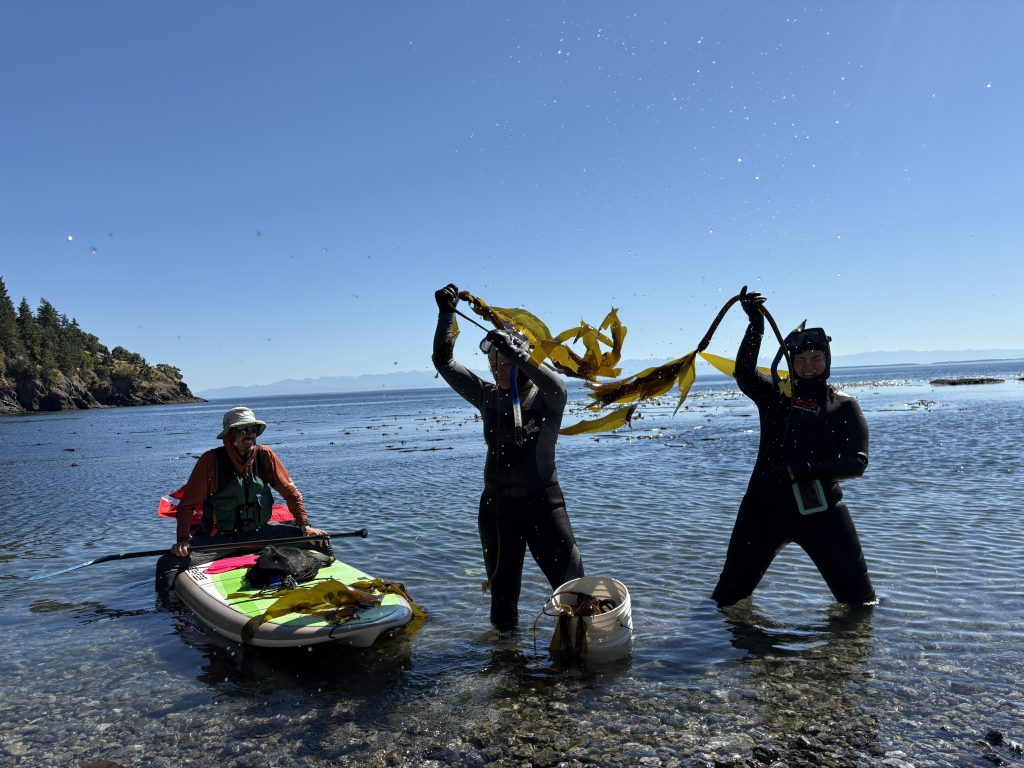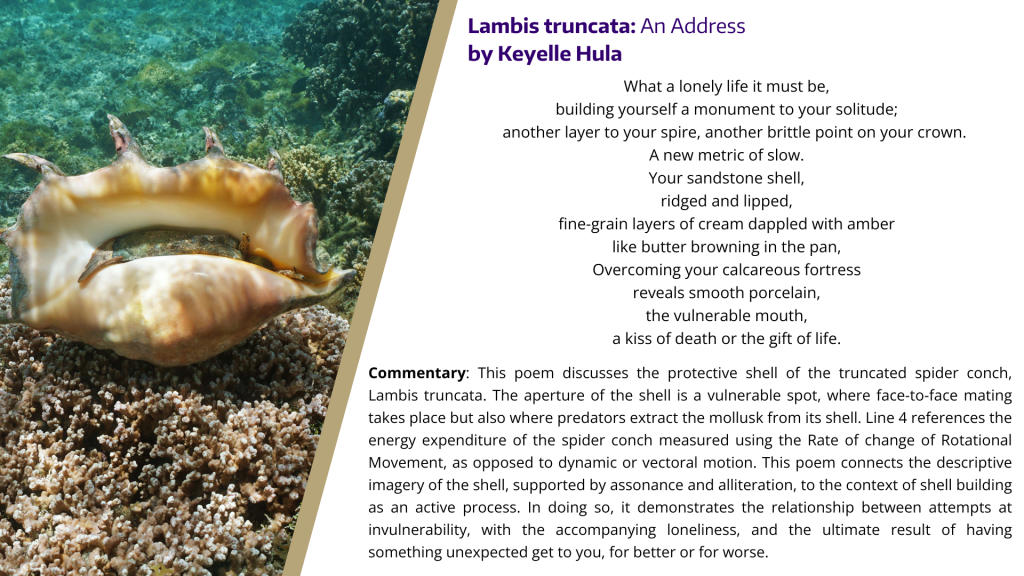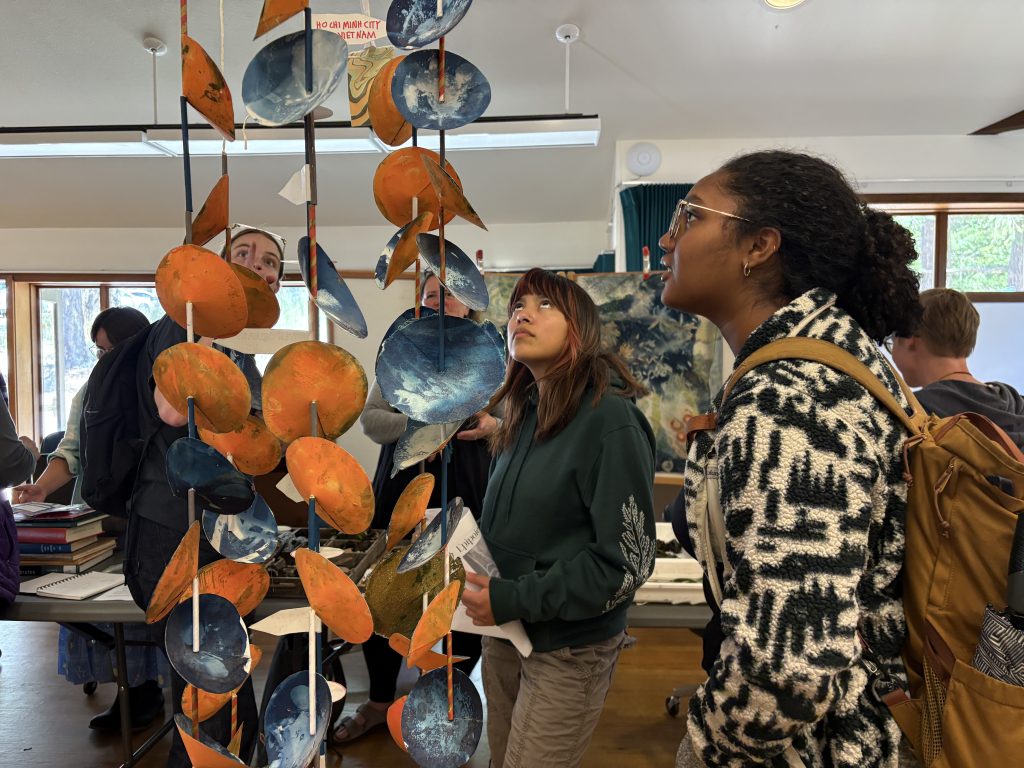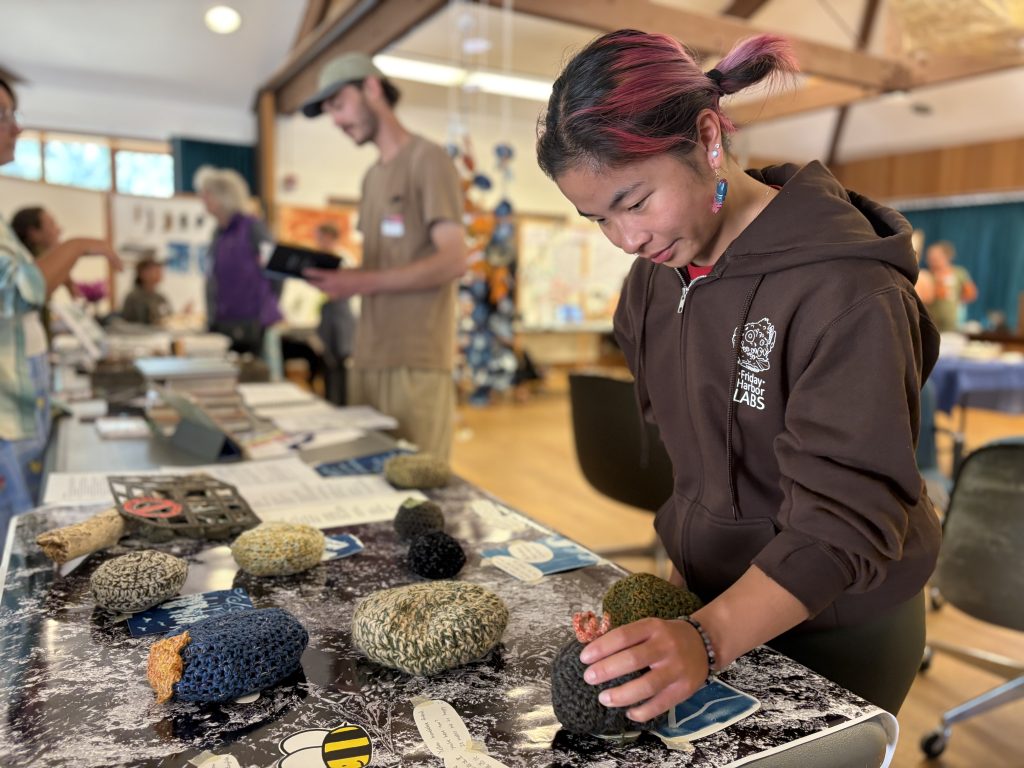Bridging the disciplinary divide: Six reasons why we should integrate science and art
In his famous words, Oscar Wilde proposed that life imitates art, meaning that art can shape our understanding of life and inspire us to act in certain ways. So why not science too? Marjorie Wonham, Associate Teaching Professor in University of Washington Marine Biology and the School of Aquatic and Fishery Sciences (SAFS) at Friday Harbor Labs (FHL), has published a new study in BioScience outlining the six reasons why integrating arts and sciences in higher education is an effort worth undertaking.
Marjorie and colleagues—including fellow faculty at the time, Curtis Wasson, and Umayeer Milky and Keyelle Hula, both former undergraduate students—explain that the inquiry-based processes of arts and sciences have a lot more in common than we might think. “Curiosity and creativity and communication are all things shared by both arts and sciences and providing a space for students to explore both allows them to develop their whole selves, rather than feeling that have to pick one or the other,” Marjorie shared.

The six reasons highlighted in the paper are backed up by a course developed at Quest University—where Marjorie was previously a faculty member—named Biology-Poetry. “The undergraduates who took that course were very engaged and invested in helping co-create it, and it was designed to take into consideration their interests and goals, and to allow them to adapt parts of it to meet their needs,” Marjorie said. The course put into practice the following themes:
- Arts-science interdisciplinarity is needed to address today’s problems, to foster skills in students including the capacity to appreciate, question, and connect multiple learning paradigms.
- Interdisciplinary competence can enhance intercultural competence, with these initiatives also working to enhance diversity, inclusion, and decolonization.
- Interdisciplinarity generates dissonance, where both students and instructors encounter unfamiliar jargon and resee their disciplinary conventions through the eyes of others.
- Interdisciplinarity magnifies awe and wonder.
- An interdisciplinary arts and sciences approach to nature enhances relationality, which is increasingly important in a world facing climate, biodiversity, and sustainability crises.
- Science and arts are natural partners, both requiring the teaching and practice of careful observation.
The course, which ran twice at Quest University Canada, brought together fives strands of inquiry, from conceptual, empirical and analytical, to creativity and production. This included writing research papers comparing literary and scientific elements of biology poems and then assembling poems with scientific commentaries and reflections. “In the second iteration of the course, the students took tremendous ownership of it, and so we invited any of them to join us as co-authors on the project,” Marjorie said. “Umayeer and Keyelle jumped on board and contributed to reviewing the literature, shaping the paper, providing reflections on their own experiences. Writing the paper was a much richer experience for being able to work with them as co-authors.”

The Biology-Poetry course at Quest University is just one of Marjorie’s official forays into integrating arts and sciences. This shared framework of inquiry in poetry and biology and the six reasons highlighted underpinned the philosophy and practice of a weeks-long integrative workshop that took place at FHL during the summer of 2025 called ‘Marine Science, Ocean Arts’. “By collaborating with my co-facilitators for this workshop, I was able to broaden the scope of my work from biology-poetry to a wider variety of arts, and to broaden by audience from undergraduates to a group encompassing undergraduates, graduate students, and professionals,” Marjorie said.

Read about some of the participant insights from the Marine Science, Ocean Arts workshop held at FHL
“I have learned a lot about different ways to incorporate science and art in my practice. The workshop provided me space to reflect upon my own identities as a scientist and artist and come up with creative ways to express thoughts and feelings and sense the ocean.”
“It was a phenomenally important gathering of topics in the ocean emergency, marine sciences, and creative arts. I’ve literally been waiting for something like this for my whole life! The learning experience itself was both experiential and deeply personal and emotionally driven. Meaning, it tapped into a deeper unconscious drive I had as a scientist and writer.”
